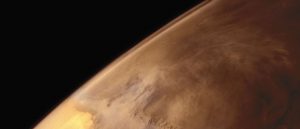
Source: Popsci.com
In March 2002, when SpaceX was founded, they announced their companies manifesto, the most ambitious goal ever set in the history of humanity. Make the human civilization multi-planetary. The idea is that the human race needs to put their eggs in more than one basket. At this point one massive event and human race could cease to exist. The goal is to put 1,000,000 people on Mars, in the near future (1,000,000 is thought to be the minimum size to be self sustainable). In August of 2016 SpaceX announced the designs of the vehicle that will pull off such a feat. The Interplanetary Transport System (ITS) this gargantuan ship will be capable of transporting 100 people per flight to Mars at a small cost of 100,000 – 200,000 dollars per trip. How they have reduced these costs to being affordable to your average American, (if you sell your house which when moving to mars, would be necessary) is through the power of reusability. These ships are capable of getting into space and returning through vertical takeoff and landing. This ship will make the 2-month trip during every the window every 2-years. As the infrastructure on Mars progresses, more of these ships will make the trip simultaneously.
This project comes in with the idea that SpaceX is providing the vehicle and tools for colonization but we need to look at where on mars this makes the most sense. The project will develop a method for finding appropriate landing sites that are near areas large enough for colonization. This means considering expanse of subterranean ice, as this is a source for fuel and living. The landing zone will need to be flat and large enough to accommodate the landing of the 25m base of the ship. Surrounding mountains must be at low enough angles to accommodate Aerobraking at shallow angles through the atmosphere and then vertical landing. There will need to be an area that accommodates the size for a colony that must expand to the size of 1,000,000 people. Each person will require a large enough area for farming and green space. Assumptions on layouts of the colonies will need to be made. Such that no structure will be more than one floor. This will give the maximum size of square km required by a single human.
Due to the problem of an extremely large data sets of Mars and limited computing power. This analysis will have to be pared down to an area of Mars that will represent Mars’ many environments. Due to the pared down size of the data the colony size will be pared down to 10,000 people instead of 1,000,000.